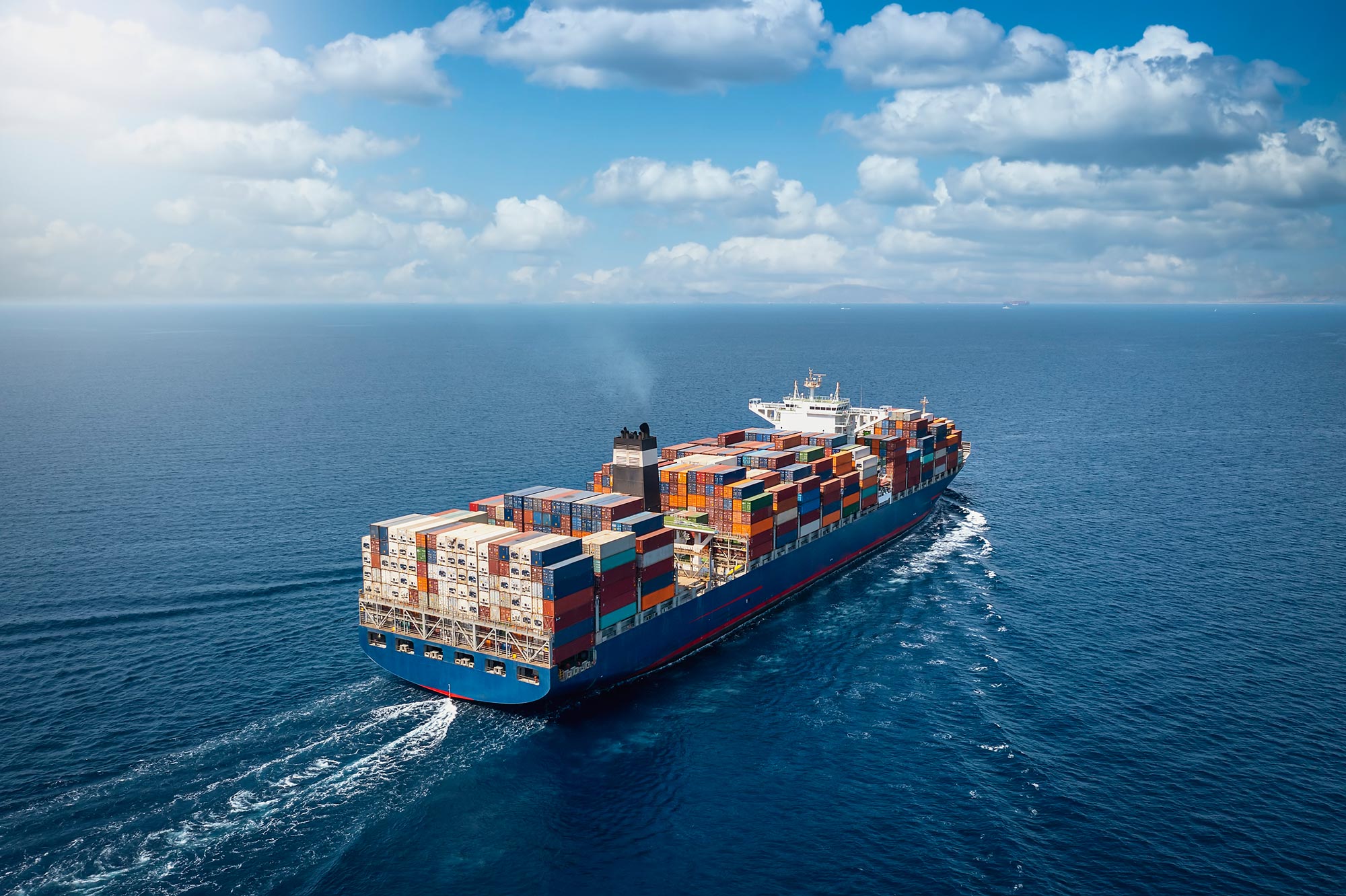Exhaust gas cleaning systems (EGCS), or commonly known as scrubbers, are used to remove harmful components including SOx, Black Carbon (soot), Particulate Matter, and other impurities from the exhaust gas of marine engines and auxiliary generators. An EGCS reduces the air pollution by exhaust gas to international levels considered to be safe for environment and human health. The pollutants emission is regulated by global and regional environmental laws and regulated by the International Maritime Organisation (IMO).
Exhaust Gas Composition
The main constituents of the exhaust gas from marine diesel engines include fuel combustion products (carbon dioxide CO2 and water vapour H2O) and air components (nitrogen N2 and oxygen O2). In addition, exhaust gas contains carbon monoxide CO, unburned hydrocarbons from fuel, sulphur oxides SOx and nitrogen oxides NOx. TheSOx (SO2 and 3-5% of SO3 admixture) are produced when any sulphur-containing fuel is burned. TheNOx (NO with NO2 admixture) are products of N2 and O2 interaction. The exhaust gas containsa mixture of small solid particles and liquid droplets called particulate matter (PM), which is produced when fuel is burnt and by afterwards reactions.

What Should be Removed from the Exhaust Gas?
Components that have negative impact on the environment and on human health: SOx, NOx, CO, CO2, unburned hydrocarbons, and particulate matter (PM).
Emissions Regulation
Control of SOx emissions has been gradually increased by the IMO since 1997. IMO 2020 bans the use of fuel with Sulphur content exceeding 0.50% m/m (mass by mass), except for vessels equipped with an EGCS.
NOx control requirements areapplied to ships with specified diesel engine characteristics while operating in emission control areas (ECA).
Control of greenhouse gases (CO2, methane (CH4) and nitrous oxide (N2O)) emissions: in June 2022, the EU Parliament voted for the inclusion of shipping into the EU Emissions Trading System (ETS). The race is now on to provide Carbon Capture Systems for ocean-going vessels.
Using Exhaust Gas Cleaning Systems for Vessels
More than 4,000 EGCSs have already been installed on vessels (about 400 until spring 2018). An EGCS is an approved way to comply with IMO 2020 regulations, and is a good alternative to burning expensive very low sulphur fuel oil (VLSFO) and the dependence on its availability and price instability. Vessels equipped with an EGCS may continue to use much cheaper high sulphur fuel oil (HSFO) inside and outside SECA zones.
Because of a marked increase in the spread between HSFO and VLSFO/MGO, fuel-cost savings have accelerated the payback of CAPEX associated with a scrubber installation and then generate profits thereafter. Therefore, many shipowners who have installed an EGCS already have a full payback of their initial investment.
Additionally, on a “well-to-wake” basis, burning HSFO with a scrubber generates less CO2 than burning compliant fuels, and the Particulate Matter resulting from burning compliant fuels is much smaller than with HFO, and this smaller PM is what causes long term health effects to human health.
Selection Criteria for the Exhaust Gas Cleaning System
Technical: suitability for a particular ship type and tonnage.
Ecological: environmental compliance within shipping routes, list of pollutants removed from the exhaust gas, pollutant removal efficiency; using of wash water, volume and pollution level of waste water produced; application and/or production of hazardous chemicals.
Economic: CAPEX, maintenance cost, long-term costs, HSFO price and the spread between HSFO and VLSFO/MGO.
Time expenditure: total project time, installation lead time, and need for dry docking for installation.
Types of EGCSs
There are two basic types of EGCS units used for mitigation of SOx and particulate matter (PM): aqueous or “wet” and “dry.”
A Wet EGCS uses seawater or fresh water to reduce SOx and PM content in the exhaust gas. Most open circuit or “open-loop” wet EGCS use seawater whereas a closed loop scrubber makes use of fresh water with addition of basic chemical reagents. Hybrid scrubbers are able to switch from the open-loop and closed-loop mode. Seawater from an open-loop EGCS is discarded without purification, i.e. the amount of pollutants remains the same, they are simply transferred from the exhaust gas into marine environment. Therefore, there are numerous discussions concerning their environmental safety and ther use has been banned in many places arounf the globe. The cost of more environment-friendly closed-loop and hybrid systems are significantly higher than that of open-loop ones. Wets scrubbers offer relatively low OPEX once in operation, but they have several disadvantages: high Capex, long installation time, extreme electricity requirements to operate the pumps, extensive modifications to the ship, and the acidic waste-water.
Dry EGCS units using solid powder to “absorb” exhaust gas pollutants have now been developed for marine use. After decades of use on land, SodaFlexx has adapted the technology for ships, and can offer delivery/installation in as little as 4 months. The advantages of a dry EGCS are relatively low CAPEX, minimal electricity consumption, short lead time for installation, no major modifications to the vessel, and the absence of waste-water.
The SodaFlexx EGCS uses sodium bicarbonate (NaHCO3) to absorb SOxand other impurities. The resulting residues produced are classified as non-hazardous waste and can be released or recycled. Consequently, there are no harmful reagents or discharge. We work extensively with industry leader Solvay, as the best results in terms of efficiency and performance have been achieved with their ready-to-use products, specifically developed for Exhaust gas treatment purposes.
Solvay is a historical global leader in the chemical sector, and in particular, is well-known as the pre-eminent producer of soda ash and sodium bicarbonate. Solvay produces the most efficient sodium bicarbonate formulation for the SodaFlexx EGCS, and we offer a global supply of the absorbent delivered directly to your vessel in our patent-pending containerised charge units or by pneumatic truck/barge.
Inexpensive, fast installation with no drydock needed, and safe chemistry – SodaFlexx chemistry is the best alternative for ship owners that are looking to join the scrubber brigade.





